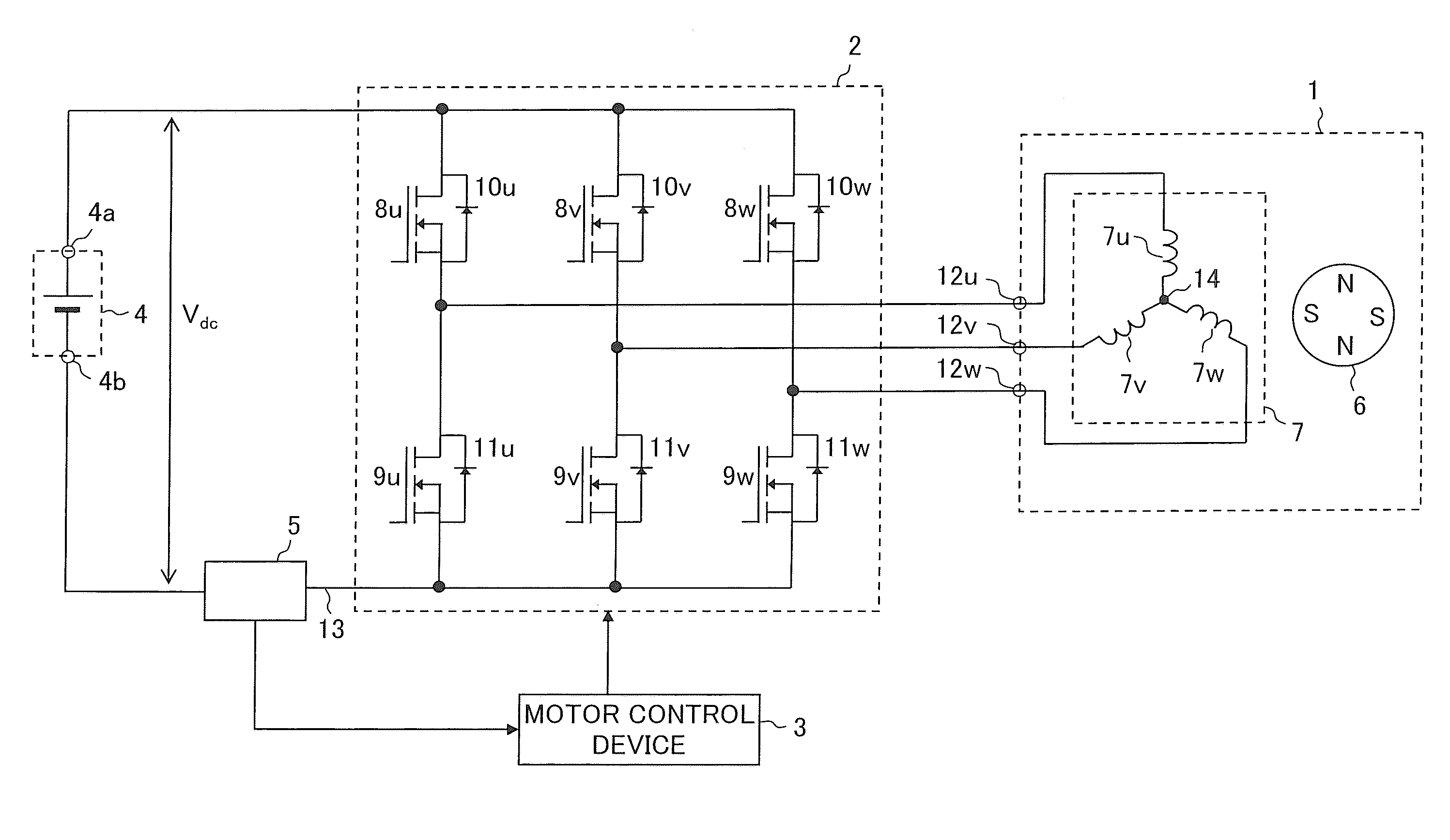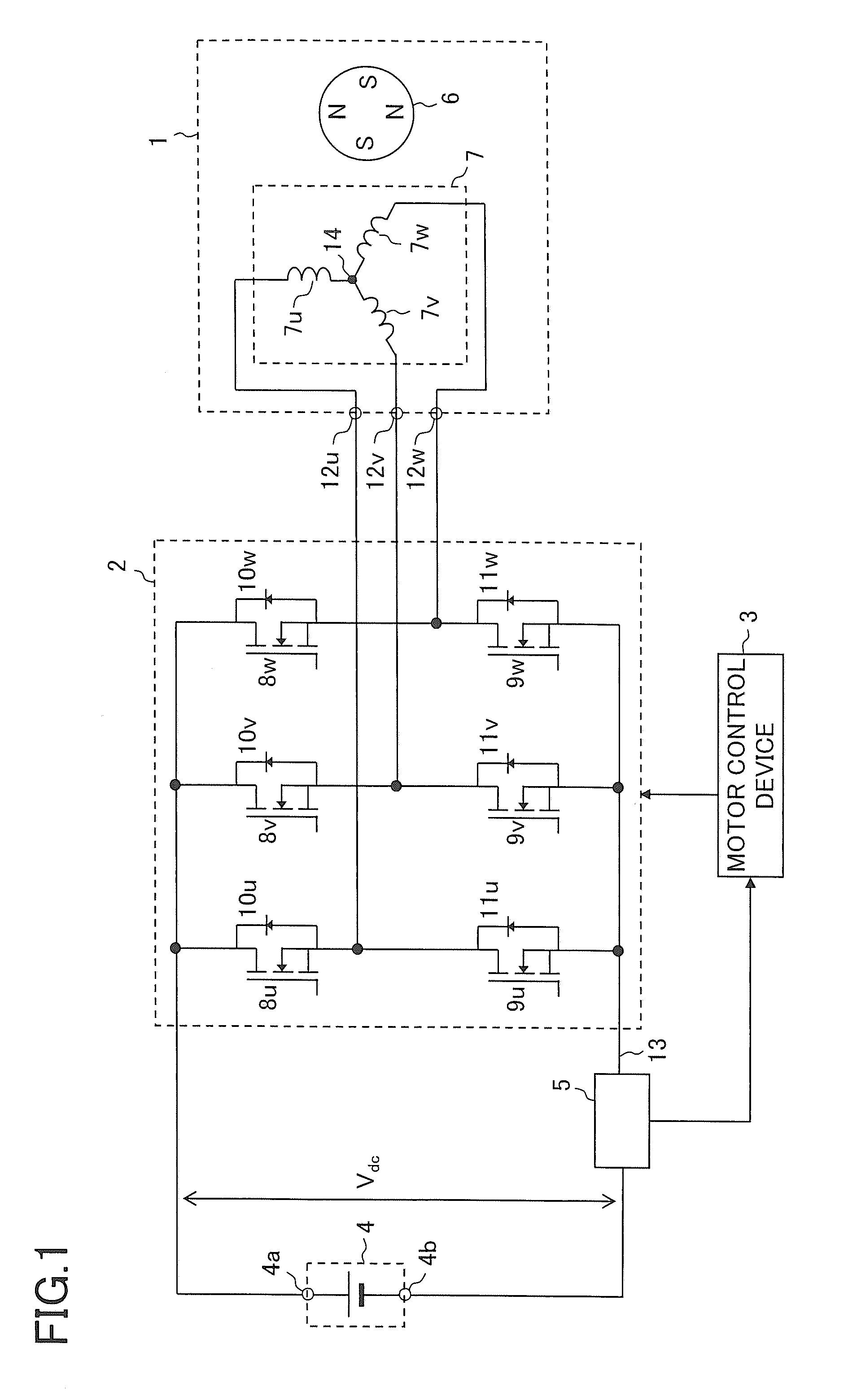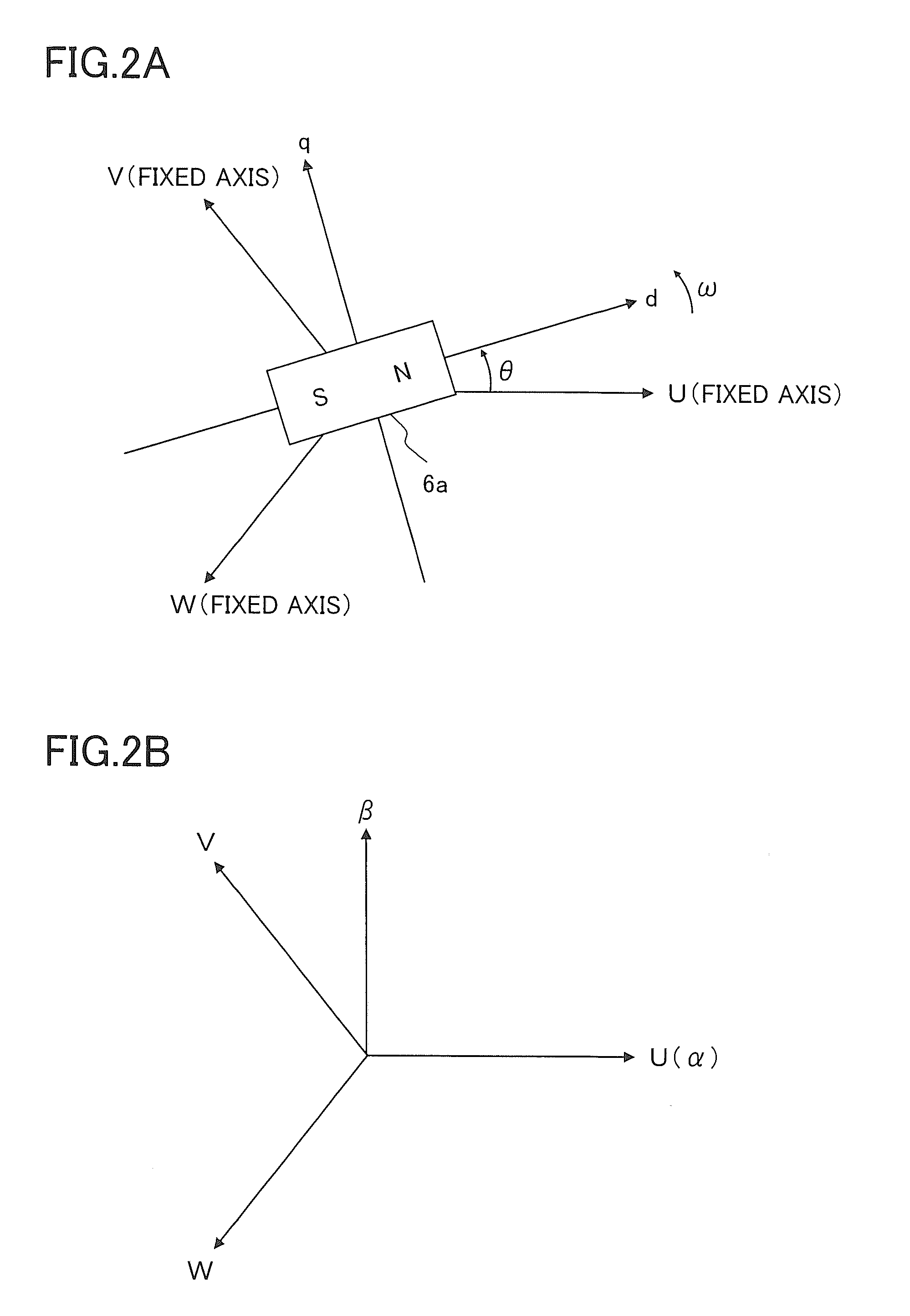Motor control device, motor drive system and inverter control device
a technology of motor control device and control device, which is applied in the direction of electronic commutator, dynamo-electric gear control, dynamo-electric converter control, etc., can solve the problems of reducing the width of the pwm signal, difficulty in phase current detection of the maximum voltage phase, and increasing the cost of the entire system of the motor
- Summary
- Abstract
- Description
- Claims
- Application Information
AI Technical Summary
Benefits of technology
Problems solved by technology
Method used
Image
Examples
first embodiment
[0051]A first embodiment of the present invention is described. FIG. 1 is a block diagram of a motor drive system according to the first embodiment of the present invention. The motor drive system illustrated in FIG. 1 includes a three-phase permanent-magnet synchronous motor 1 (hereinafter simply referred to as “motor 1”), a pulse width modulation (PWM) inverter 2 (hereinafter simply referred to as “inverter 2”), a motor control device 3, a DC power supply 4, and a current sensor 5. The DC power supply 4 outputs a DC voltage between a positive output terminal 4a and a negative output terminal 4b, where the negative output terminal 4b is a low voltage side. The DC voltage output from the DC power supply 4 and a voltage value thereof are denoted by Vdc.
[0052]The motor control device 3 controls the inverter 2 so as to control the motor 1. Therefore, the motor control device 3 can also be called as an inverter control device.
[0053]The motor 1 includes a rotor 6 having a permanent magne...
example 1
[0116]The determination of the timings ST1 and ST2 and the determination of values of n, SA, and SB are performed on the basis of the specified three-phase voltage values vu*, vv*, and vw* m the fundamental structure, but these determinations may be in performed on the basis of vd*, vq*, and θ instead of vu, vv*, and vw*, or these determinations may be performed on the basis of vα* and vβ* instead of vu, vv*, and vw*. When vd* and vq*, or vα* and vβ* are used for determining the value of n, (θ+ε+π / 6) should be divided by π / 3 so as to determine a quotient, and the quotient should be set to n.
[0117]Here, vα* works as a target value of the α-axis voltage vα to be followed by the α-axis voltage value vα, and vβ* works as a target value of the β-axis voltage vβ to be followed by the β-axis voltage value vβ. The specified voltage values vd* and vq* on the dq-axis are converted into specified voltage values on the αβ-axis on the basis of the rotor position θ so that vα* and vβ* are derived...
example 2
[0118]Example 2 will be described. The specified current values id* and iq* on the dq-axis are used for estimating the phase current imid of the intermediate phase in the fundamental structure. In contrast, id and iq that are to be said as detected current value on the dq-axis (or detected current values on the dq coordinate system) may be used instead of id* and iq* so as to estimate imid. In this case, the phase current detection unit 20 illustrated in FIG. 8 is deformed to be a phase current detection unit 20a illustrated in FIG. 12. The phase current detection unit 20a can be used as the phase current detection unit 20 illustrated in FIG. 7. The phase current detection unit 20a is supplied with id and iq from the coordinate converter 21 instead of id* and iq*. The phase current detection unit 20a includes the blocks 41, 42, and 44, and an intermediate phase current estimation block 43a.
[0119]The estimation block 43a is supplied with the current values id and iq, the rotor posit...
PUM
 Login to View More
Login to View More Abstract
Description
Claims
Application Information
 Login to View More
Login to View More - R&D
- Intellectual Property
- Life Sciences
- Materials
- Tech Scout
- Unparalleled Data Quality
- Higher Quality Content
- 60% Fewer Hallucinations
Browse by: Latest US Patents, China's latest patents, Technical Efficacy Thesaurus, Application Domain, Technology Topic, Popular Technical Reports.
© 2025 PatSnap. All rights reserved.Legal|Privacy policy|Modern Slavery Act Transparency Statement|Sitemap|About US| Contact US: help@patsnap.com



